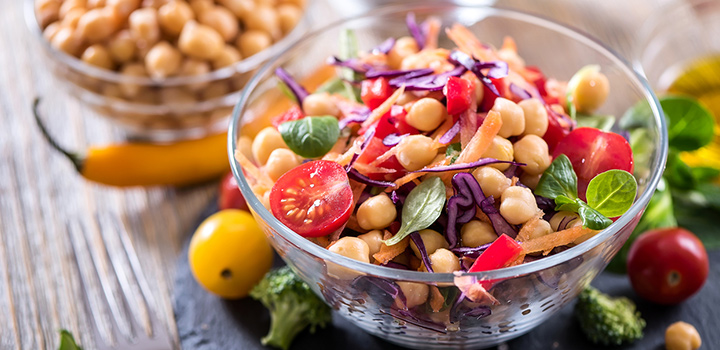How to power up your meals with pulses

Legumes and pulses are being hailed as planet-friendly nutrition powerhouses- but let's face it - they can taste pretty plain by themselves. Here are some fresh ideas and clever tips on how to incorporate them into your meals.
Plant-based eating is experiencing a comeback, and all the better for you, because nuts, fruit and vegetables are packed with nutrients and minerals. It's easy enough to persuade yourself or your family to eat colourful and readily accessible foods like carrots, cucumber and berries, but what about more homely legumes and pulses?
Bean there, done that?
Pulses are a part of the legume family, and these humble seed pods include dried peas, beans, chickpeas and lentils. If your imagination stretches as far as defrosting a handful of peas, rest assured - there are many ways you can add legumes to meals you already make.
But first, learn how to prepare dried legumes by soaking them. This step rehydrates them for more even cooking, removes the indigestible carbohydrates that can cause bloating and flatulence, and shortens the cooking time. Else, pop open a can and rinse the contents thoroughly to wash off the excess salt. Then try some of these ideas:
How to include more legumes in your meals
- Add lentils to your own vegetable and mince recipes.
- Chuck some chickpeas into stir-fries.
- Add split peas to soups, casseroles and meat sauces to extend the meal and add extra texture and flavour.
- Throw some red kidney beans into your lasagne.
- Oven roast chickpeas for a super snack.
- Use four-bean mixes as a salad base, then add vegetables and a little oil-based dressing.
- Serve hummus (puréed chickpeas) with vegetable crudité for a delicious snack.
- Top toast or make a toasted sandwich with baked beans.
- Use lentils or mashed chickpeas as a base for patties or vegetarian burgers.
- Beans are done when they can be easily mashed between two fingers or with a fork.
- To freeze cooked beans for later use, immerse them in cold water until cool, then drain well and freeze.
- Freeze puréed beans in ice trays and use to thicken soups or stews.
- Cooked beans can be refrigerated for at least four days and frozen for up to a year without loss of quality.
We asked Discovery dietitian Carla Pool for her top tip, and she said: "When preparing legumes, remember to only add acidic ingredients, such as vinegar, tomatoes or juice, near the end of the cooking time, when the beans are just tender. If these ingredients are added too early, they can make the beans tough and slow the cooking process."